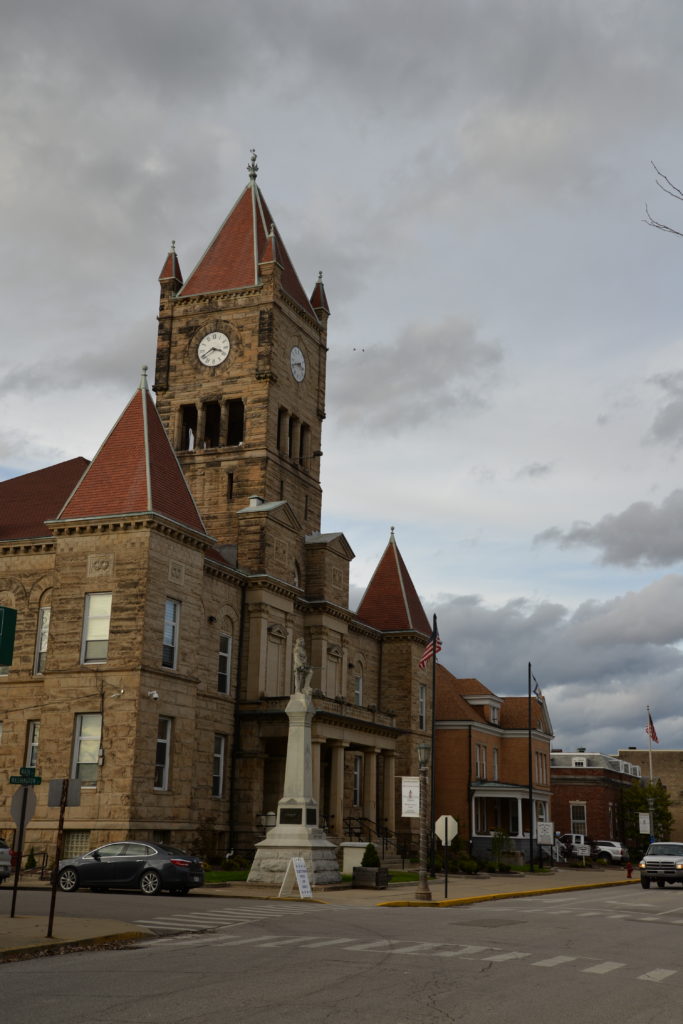New Martinsville
4 min reada
a
May 2017
One might not expect to find some of the most promising renewable energy operations in a region nestled in the heart of coal country, but for the City of New Martinsville, hydroelectricity is just a regular part of the landscape.
Located on the shores of the Ohio River in the West Virginia panhandle, New Martinsville has been an AMP member since the early 1980s. As one of only two publicly owned utilities in the state (the other being Philippi, an AMP member community located south of Morgantown), New Martinsville’s municipal electric utility provides power for half of the city’s approximately 5,300 residents.
In a region where it can be difficult for private suppliers to quickly reach areas in need of repairs or service, it’s extremely handy to have a local utility that residents can monitor and participate with, according to David White, general manager.

Located on the Ohio River, New Martinsville owns and operates the Hannibal Hydro Plant, which has been in operation since 1988.
“We’re a rare breed in the state,” White said. “We don’t have any publicly owned neighbors. But just because we’re small doesn’t mean our customers shouldn’t expect the same product and results as larger providers. My goal has always been to provide the very best we can to our customers at as low of a cost as possible.”
New Martinsville owns and operates the Hannibal Hydro Plant, which has been in operation since 1988. Each of the plant’s twin bulb turbine generators is capable of producing 18 megawatts (MW) of power – all of which is sold to FirstEnergy as part of the original construction contract.
The city’s supply needs are purchased primarily through three AMP projects, and though the utility does not get power supply from the Hannibal Hydro Plant, the Ohio River still provides some of the utility’s supply.
“Our peak demand currently is around 9 MW,” White said. “We get close to 4 MW from the Fremont Energy Center, about two from the Prairie State Energy Campus, and not quite one megawatt from the Willow Island Hydro Plant. We used to have to go out onto the market and buy extended contracts to meet our needs, but currently this is fitting our portfolio nicely.”
According to White, the ability to purchase its power through AMP partnerships has brought a stability of purchasing to the utility that was impossible in years past.

The Wetzel County Courthouse located in New Martinsville’s historic district. New Martinsville is the seat of Wetzel County, West Virginia.
“When I first started with the city, we would go out and enter full-service contracts to supply everything we needed, but then the market just went crazy,” White said. “Our pricing skyrocketed almost overnight. We needed more control over our own supply. Our AMP membership gave us the ability to buy in and own our own generation through diversified projects. Now we can play the market when things are going well, while still owning some of our own generation and having a voice in the overall direction of those projects.”
With reliability, stability and other customer-focused initiatives at the forefront, New Martinsville was able to earn Reliable Public Power Provider (RP3) status from the American Public Power Association (APPA) four times: in 2009, 2011, 2013 and 2015. When it first achieved RP3 designation in 2009, it was the second-smallest public utility in the U.S. to earn that status.
“I hope to think a big part of that is the steps we’ve made to keep up with the needs of our customers – installing state-of-the-art equipment as it becomes available, being very proactive with preventative maintenance and our vegetation management program. If a disaster strikes, we can call on AMP for mutual aid. I can’t even explain how big a benefit that is,” White said.
According to White, AMP’s Mutual Aid program was particularly beneficial in 2012, when the mid-Atlantic Derecho brought severe storms rolling through the Ohio Valley. Through the program, members were able to lend a hand in recovery.
“We were back up and running in four days and were very proud of that,” White said. “Some of the investor-owned utilities had places without power for 13 or 14 days. I certainly don’t want to understate the damages they had to deal with following that storm, and it’s very hard to get to some of the areas around here, but we were very proud at our own ability to get back up and running.”
The abundance of hydroelectricity along the river may have set an example for users in the area in terms of conservation, White said. The utility’s peak demand has been dropping incrementally over the past seven years.
“You can tell what the conservation sector has done in the area,” he said. “I think our investment in hydroelectric shows that we’re trying to stay ahead of the times, that we are environmentally conscious. It’s important to be thinking ahead and meeting the changing needs of the energy industry, which has become a positive thing for both the environment and supplying our customers’ needs.”
To learn more about AMP’s members visit the members page of the AMP website.


